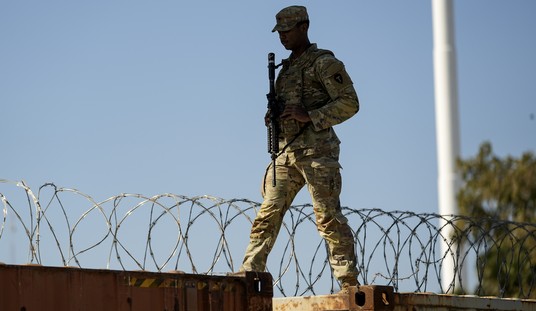WASHINGTON — The number of ISIS fighters believed to remain in Syria and Iraq is much higher than previously estimated, according to a new report to Congress from the U.S. Lead Inspector General.
At the end of December, the U.S.-led coalition said in a statement to Reuters that “due to the commitment of the Coalition and the demonstrated competence of our partners in Iraq and Syria, there are estimated to be less than 1,000 ISIS terrorists in our combined joint area of operations, most of whom are being hunted down in the desert regions in eastern Syria and Western Iraq.”
Earlier that month, where Iraq declared victory over ISIS, the coalition estimated there were fewer than 3,000 ISIS fighters left in the region. At successive briefings, the Defense Department has declared continued success against the terror group.
But the new report estimates “roughly 14,000 fighters” still in Syria and “15,500 to 17,100 ISIS fighters” remaining in Iraq at the conclusion of the quarter at the end of June.
“Although there has been an overall decrease in violence, these fighters, organized in small cells, continued to plant improvised explosive devices (IEDs) and to mount terrorist attacks,” the report said of the Iraq jihadists. “ISIS also carried out multiple kidnappings and abductions in Kirkuk. Media reports noted that ISIS’s continued ability to launch attacks could exacerbate sectarian tensions between Shia and Sunni communities.”
One reason for the setback has been Kurds in the Syrian Democratic Forces, the multisectarian coalition that has recaptured occupied territory including Raqqa, being pulled from the front lines against ISIS to defend Kurdish cities in northern Syria from Turkish attacks.
“The DoD said while Arab members of the SDF maintained defensive positions against ISIS during the pause, they did not conduct offensive operations,” said the IG report. “As a result, according to the DoD, ISIS capitalized on the YPG forces’ redeployment to Afrin to increase its influence in territory held by the Syrian regime and various rebel groups, and was able to regroup and plan attacks.”
The report also noted that Iran “commanded about 3,000 Islamic Revolutionary Guard Corps (IRGC) members in Syria, as well as thousands of Lebanese Hezbollah and Shia foreign fighters from Iraq, Afghanistan, and Pakistan, who reportedly conducted operations from at least 10 military bases and 40 other positions across Syria,” but U.S. efforts to counter Iranian influence in Syria were “indirect.”
“While Iranian activity in Syria did not pose an immediate threat to U.S. troops stationed in Syria this quarter, according to the DoD, Iran’s training and equipping of foreign fighters in Syria presents an ongoing threat to U.S.-backed forces,” the IG wrote.
The report added that after President Trump said in April the U.S. would be leaving Syria “very soon,” there was no change in defense policy afterward though the administration has been dialing back stabilization funding.
The U.S. will “very soon” begin training Turkish forces to patrol Kurdish areas around Manbij, Defense Secretary James Mattis said Thursday, so they can coordinate patrols per a “long-term security” plan.









Join the conversation as a VIP Member